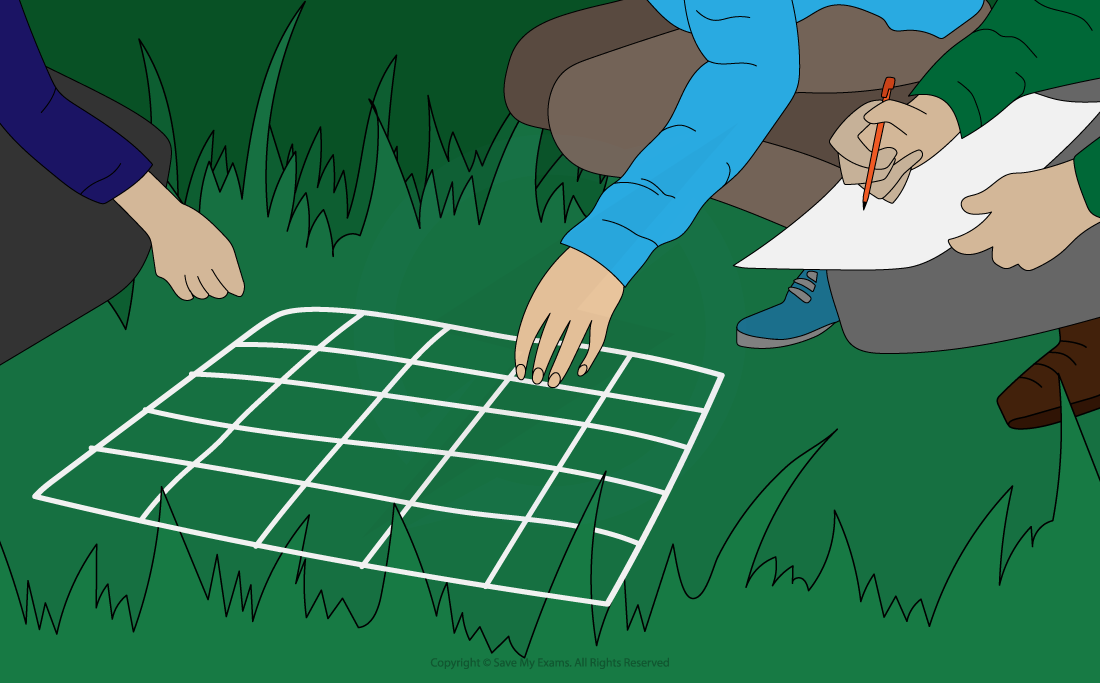Practical: Investigating Population Size (Edexcel IGCSE Biology) : Revision Note
Did this video help you?
Practical: Investigating Population Size
Ecology is the branch of biology that studies species distribution, abundance, interactions between species, and their interactions with the abiotic environment
Ecologists investigate ecosystems, often using tools like quadrats to study population size
Quadrats
Quadrats are square frames made of wood or wire
They can be a variety of sizes, e.g. 0.25 m2 or 1 m2
They are placed on the ground and the organisms within them are recorded
Plants species are commonly studied using quadrats to estimate their abundance

Quadrats are used to investigate population size or species distribution
Quadrats can be used to measure abundance by recording:
the number of individuals of a single species, e.g. buttercups
species richness: the number of different species present
percentage cover: the approximate percentage of the quadrat area in which an individual species is found
this method is used when it is difficult to count individuals of the plant species being recorded, e.g. grass or moss

Percentage cover can be assessed using a quadrat
Investigating population size in two different areas using quadrats
Apparatus
2 tape measures
Quadrat
Random number generator
Species key
Method


The population size of a plant species in a survey area can be estimated using quadrats
Results
Once the results have been collected and the averages calculated, we can compare the abundance of the species in each survey area
Species abundance is likely to be influenced by biotic factors such as:
competition
predator-prey relationships
interactions with other organisms within the food chain or food web
The abundance will also be influenced by abiotic factors such as:
light intensity
mineral availability
water availability
pH
temperature
salinity
Limitations
It can be easy to miss individual organisms when counting in a quadrat, especially if they are covered by a different species
Solution: Use a pencil or stick to carefully move leaves out of the way to check if there is anything else underneath
Identifying species may be tricky
Solution: Use a species key to identify the species
Applying CORMS to practical work
When working with practical investigations, remember to consider your CORMS evaluation

CORMS Evaluation
In this investigation, your evaluation should look something like this:
C - We are changing the study area where we are collecting the data
O - We will count the same species of organism in each quadrat
R - We will repeat the investigation several times to ensure reliability
M1 - We will count the number of the designated study species found across all quadrats
M2 - this isn't really relevant in this scenario
S - We will control the size of the quadrat, the random way that quadrats are placed on the ground, the day that the results were collected
Examiner Tips and Tricks
Take care with your spelling of the word 'quadrat' it is commonly written as 'quadrant' by students in examinations.

You've read 0 of your 5 free revision notes this week
Sign up now. It’s free!
Did this page help you?
